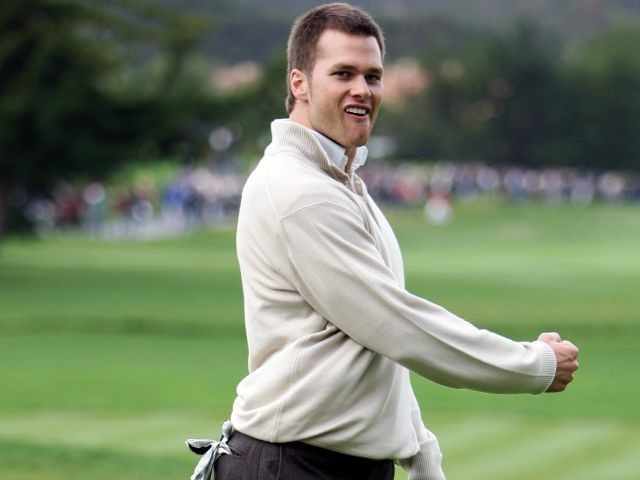A New York Law School professor known for his advocacy of the death penalty filed an amicus curiae brief in the NFL v. Tom Brady appeal.
Robert Blecker writes in his 34-page document in support of the New England Patriots quarterback that “from the start, the NFL’s investigation, adjudication, and punishment of Tom Brady for actively participating in a scheme to illegally tamper with ball pressure has been infected with bias, unfairness, evident partiality and occasional fraud.”
He specifically cites, as Breitbart Sports did in the spring, the league’s refusal to believe its own referee on what gauge he used to measure the pressure of the balls as an example of that partiality. But Blecker advances evidence in support of this position not pointed to by anyone else. Specifically, he accuses the NFL of attempting to distort the evidence through pictures of the two gauges in question that diminish the difference in needle lengths. For instance, in the pictures of the needles juxtaposed with rulers, the measurement starts well after “0” on the picture with the shorter needle while on the picture of the longer needle the measurement starts where it should. Blecker regards this, as well as the use of angles that downplay the size differentials, as one in a long line of instances in which the NFL sought to twist the evidence to flatter their incoming thesis.
Such petty partiality extends to the testing of the two competing gauges, Blecker insists. He notes that when the NFL sought to calibrate the two gauges against other ones, the league exclusively used a model comparable to the one that they insisted that referee Walt Anderson used—despite Anderson saying he used the other one—that enabled the league to find the readings they set out to find. Blecker writes, “It turns out that all the other gauges they purchased then tested were the same model as the non-logo gauge, and none were the same model as the Logo gauge. They simply couldn’t locate any older Logo models the Wells report mentions in passing! Did they check Ebay?”
The lawyer regards the NFL hyping Brady’s destruction of his cell phone as a smokescreen created by the league to hide the fact that the NFL continues to withhold important evidence. He writes, “the League’s failure to produce either gauge overshadows Brady’s failure to produce his cell-phone–especially when all phone records confirm that the NFL has all relevant texts.”
The case stems from the discovery of balls displaying pressure levels below the mandated NFL minimum during the AFC Championship Game in January. Bill Belichick, and others, cited the Ideal Gas Law as an explanation for the pressure levels. NFL officials subsequently admitted an ignorance to the scientific principle that cold weather influences pressure, in tires and in balls, in a downward direction. A federal judge ruled in Brady’s favor late this summer, reversing a four-game suspension meted out by Commissioner Roger Goodell against the Super Bowl MVP. The NFL appealed the decision. The NFL makes its response to the written arguments of Brady’s lawyers in the coming days. The parties give oral arguments in March.
Blecker employs colorful language not typically found in legal discourse, such as his dismissal of critics of Brady and the Patriots as “Hateriots.” Whereas Brady’s lawyers emphasize the NFL’s violations of process, Blecker makes a case for the quarterback’s innocence.
He maintains that “the clearest (although not most consequential) instance of bias and distortion shows up in NFL/Wells/Exponent’s finding that the referee probably mis-remembered which of his own two gauges he used 48 times! to measure both teams’ ball pressure pre-game.”

COMMENTS
Please let us know if you're having issues with commenting.